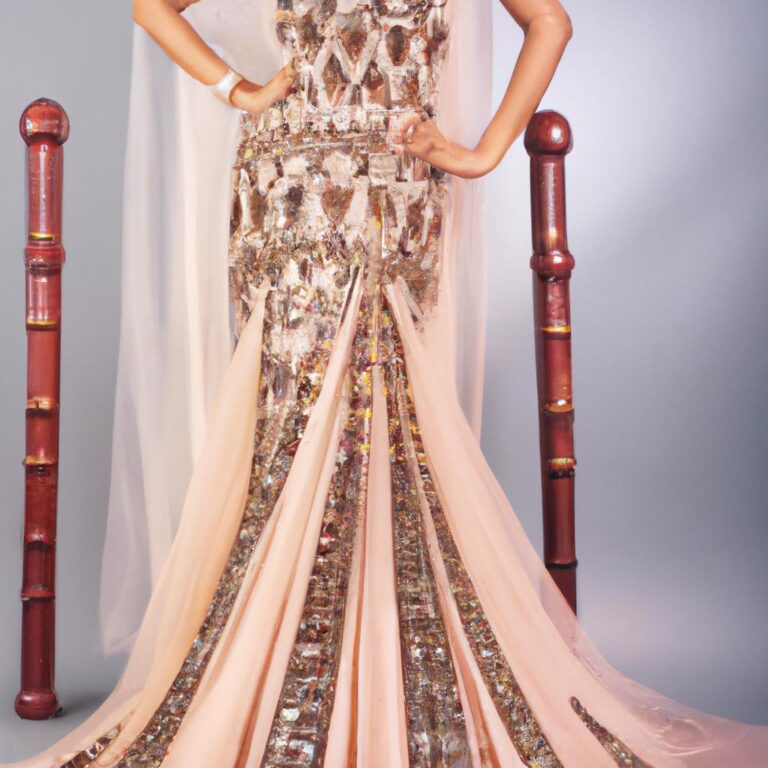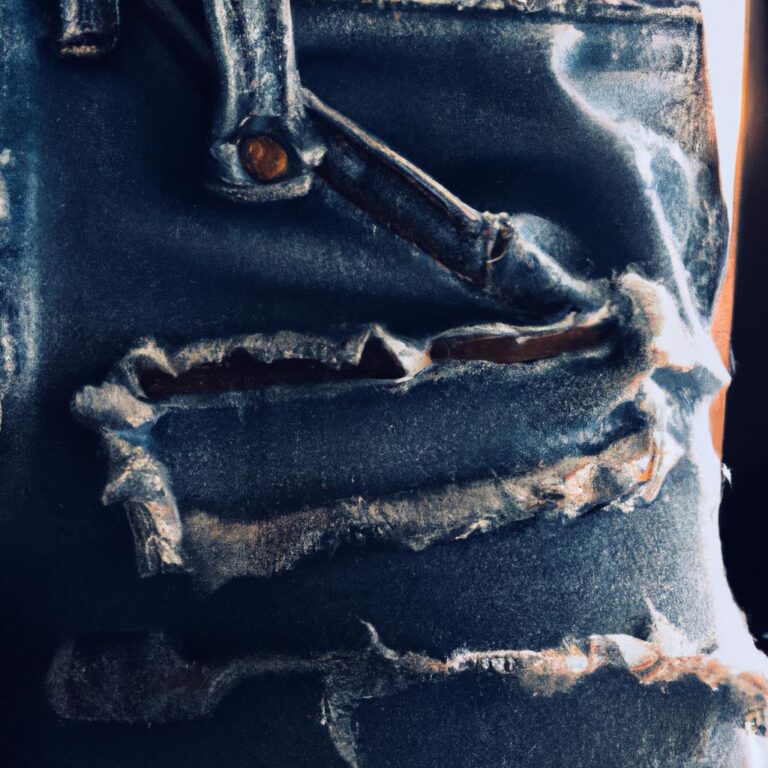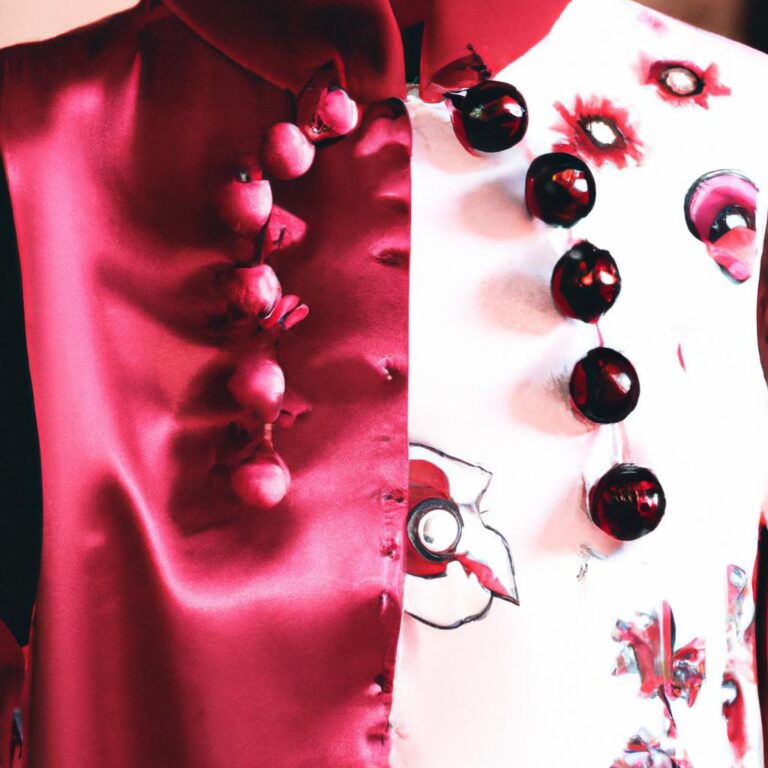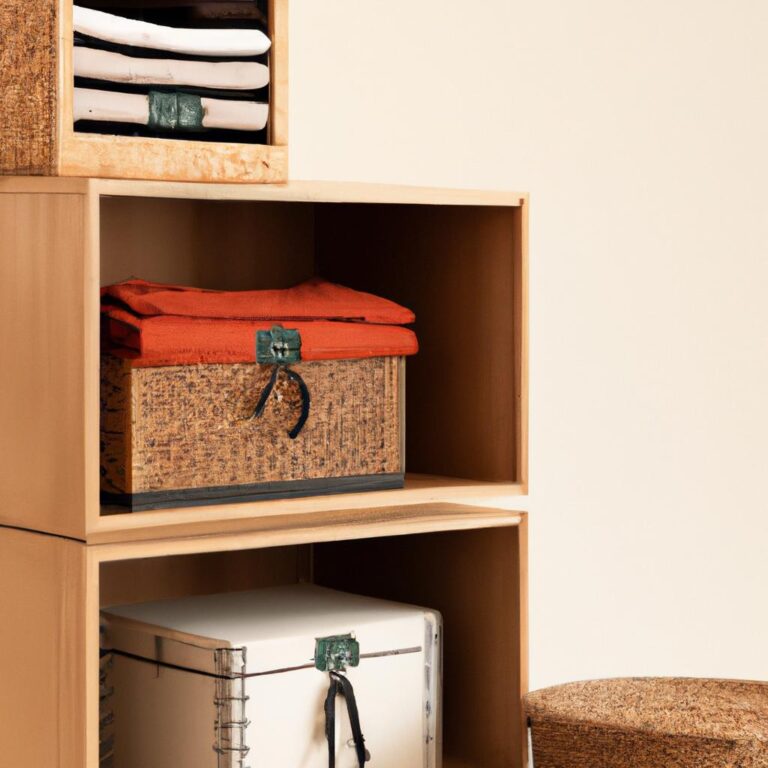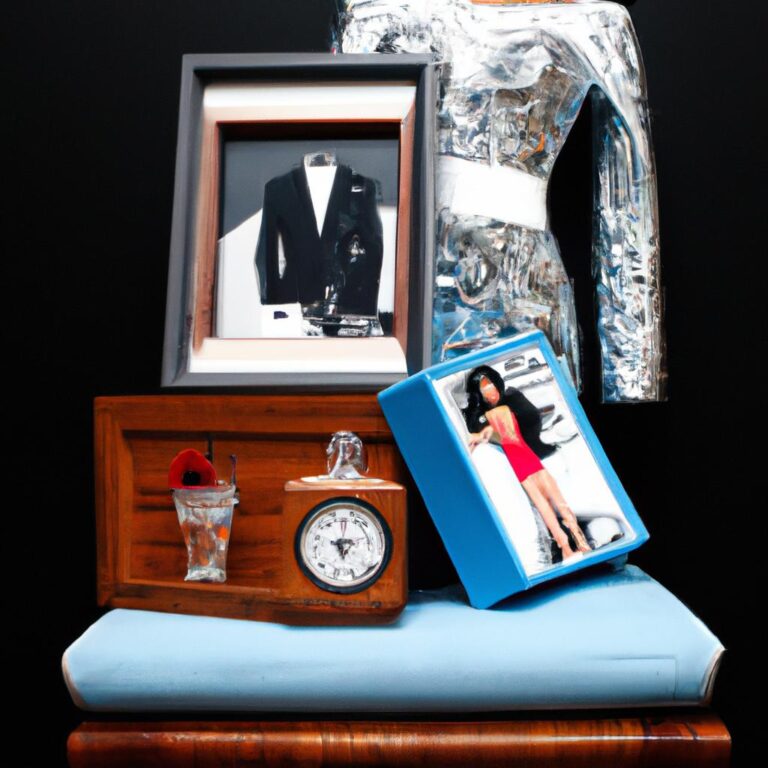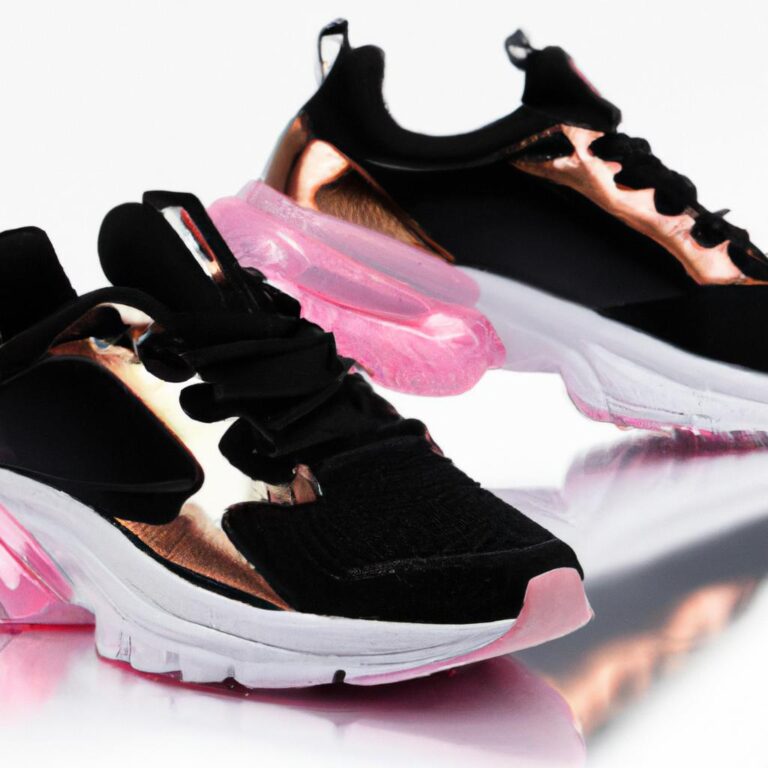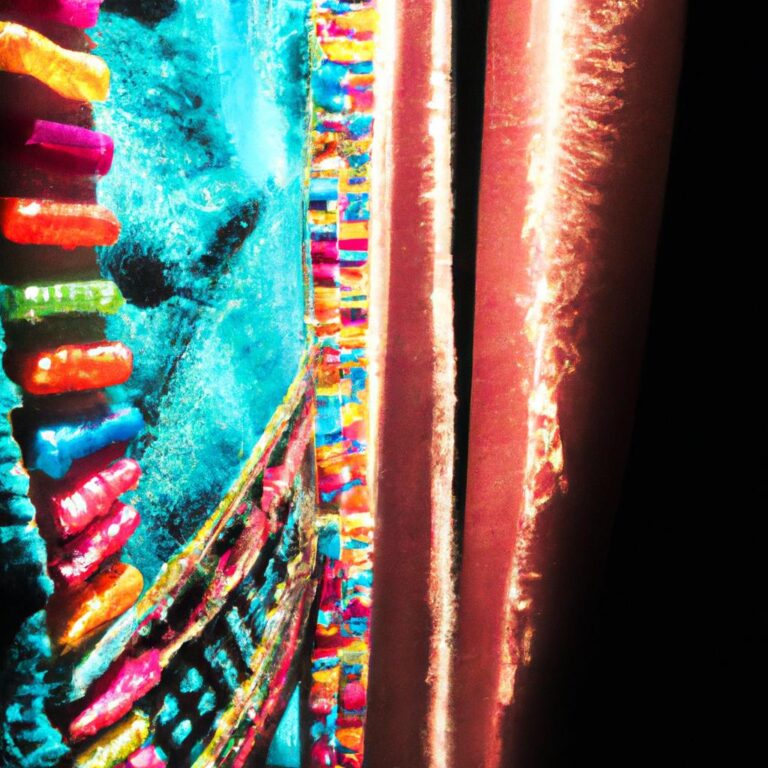Introduction: Fashion Through Time
We all have our own unique fashion style, a way of expressing ourselves and making a statement about who we are. But clothing has gone through many transformations throughout history, and it’s important to explore the rich heritage of fashion that has shaped society over the ages. In this guide, we’ll be tracing the iconic eras and styles in fashion history, and discussing how they have evolved over time.
Prehistoric Era: Clothing Materials and Functions
Clothing from the prehistoric era dates back as far as 40,000 BCE. During this time, clothing styles varied greatly due to the environment and resources available to different groups of people. For example, some tribes developed garments made from animal skins or bark while others constructed items out of plant-based materials like leaves and grasses. While clothing was primarily functional during this period, personal adornment through jewelry and body paint was also seen as a way to express oneself.
The primary purpose of clothing during this time was protection against the elements. Items like fur clothing and leather garments provided warmth and some degree of waterproofing in cold, wet climates. In warmer climates, lighter materials like linen were used to protect the skin from sunburn and sand. Clothing was often built to be multi-functional; items such as cloaks could be worn in multiple ways depending on the weather conditions.
In addition to physical protection, clothing was used to signify social status and hierarchy within a tribe. Wealthy members would wear items made from rare materials or adorned with precious jewelry. Tribal markers like religious symbols were also common accessories. As a result, clothing was a powerful symbol of social standing and routinely used to distinguish between classes within a society.
Ancient Egypt: Rich Garments as a Symbol of Wealth
The Ancient Egyptian culture had a unique fashion style with its own distinct look. Wealthy Egyptians would wear intricate and richly-colored garments made from fine fabrics like linen and occasionally from imported materials like silk. They also often drenched themselves in sacred oils and perfumes, and completed their look with jewelry and accessories.
The type of clothes a person wore was directly related to their social standing. The wealthier citizens wore finer clothes with more opulent decorations while the poorer classes wore simpler clothing without adornment. Even the color of the clothing mattered. For example, light-colored clothing was seen as a sign of wealth and chosen by those trying to show their status.
Overall, fashion during the Ancient Egyptian era showed distinction of class and emphasized their comfort with layering fabrics and jewelry. It is also noted that many religious ceremonies were associated with clothing, such as elaborate priestly robes for special occasions.
Ancient Greece and Rome: Clothing as a sign of status
The ancient Greeks and Romans created a strong connection between clothing and class. Depending on their role in society, individuals would be expected to dress in different fabrics and styles for special events. Clothes were held in high regard and were used as a symbol of social standing and prestige.
Upper-class individuals wore different pieces of clothing than those belonging to the lower classes. Wool and linen were popular amongst the wealthy, while lower classes wore more affordable fabrics, like hemp. In addition, members of the upper classes were able to show their wealth and power by wearing expensive jewelry and accessories.
Colors also played a crucial role in signaling status. Upper classes favored bright, expensive dyes, while lower classes had to stick with duller, cheaper hues. Even the range and type of fabric that was available was limited to the class of an individual.
Fashion was an important feature in ancient Greek and Roman societies and clothing was seen as a reflection of personal identity. It was believed that the fabrics and colors that one chose to wear were indicative of their social status and wealth. As such, it was of utmost importance to dress appropriately to demonstrate one’s place in society.
Medieval Era: Religious Influences and Changing Fashion Trends
The Middle Ages were an era of great religious influence in fashion. Clothing reflected the religious beliefs of the time, and the Church held enormous power. Modesty and restraint were key parts of clothing throughout the period, and people had to dress a certain way when participating in religious or public events. Outfits during this time usually consisted of tunics, cloaks, and mantles for women and men.
Although fashion trends changed more slowly during the Medieval era, different looks emerged in different areas. The Normans were known for wearing long, tightly fitted garments with a belt, and the Saxons were fond of round necklines, flat caps, and short jackets. Social status also had an impact on how people dressed. Commoners wore simpler clothes than aristocrats, who could afford more expensive fabrics.
The Medieval era also saw the first use of color in fashion. Dyes were much sought after as brighter colors cost more money. Gold and silver thread were often used to add decoration to clothing, and fur was popular among all classes of people. Wealthy members of society were even known to wear fine jewels and embroidery.
Towards the end of the Medieval era, fashion began to change rapidly. Clothing became more vibrant and decorative, with elaborate hats, veils, and coats becoming popular choices. The rising middle class embraced fashion and their demand for new trends rose. Changes in cultural beliefs also had an impact on fashion, allowing people to express themselves in more creative ways with their clothing.
Renaissance Era: Exploration of Foreign Roles and Expanding the Wardrobe
The Renaissance era was marked by a shift from the medieval traditional clothing styles towards more ornate and fashionable garments. It served to show an individual’s social position; becoming more elaborate and ornate as social rank increased. There was also a great deal of influence from foreign sources, such as the importation of silks and brocades from oriental countries.
Fabrics during this period were very luxurious and expensive, so the wealthy could afford to set the latest fashion trends. The typical outfit for men at this time consisted of a doublet, hose, and collar, all of which were made from a variety of fabrics, while women’s clothing featured a more flowing silhouette with bodices and skirts. They also wore necklaces, corsets, hats, and often wigs to create even more elaborate looks.
The trend of wearing different styles and expanding the wardrobe to include pieces from foreign cultures meant that individuals could show off their wealth and sophistication through their clothing. Alongside this, there was also a more democratic element in the form of the “pret-a-porter” system, which allowed people to buy ready-made clothing and accessories. This enabled those of lower classes the chance to dress fashionably and to a certain extent, be socially accepted.
17th-19th Century: Developments in Fabrics and Styles throughout Europe
The 17th century saw the emergence of a new era in fashion, with innovative fabrics and silhouettes being adopted by the wealthy and powerful. This period marked a shift from the heavier fabrics of the previous centuries to lighter, more delicate fabrics such as silk and muslin. In addition, clothing began to be decorated with lace, embroidery and ribbons. Women’s clothing was ornate and often featured large ruffles and flowing sleeves while men favored more tailored fits with breeches and waistcoats.
The 18th century followed suit with fashion designs continuing to focus on the wealthy upper classes. Many clothing styles drew inspiration from European countries, including France and England, and were characterized by highly decorative fabrics and intricate details. Of particular note during this time was the emergence of the French Rococo style with its emphasis on delicate curves and pastel colors.
The 19th century was an era of transition that saw many changes in fashion trends and culture. During this time, a wide variety of fabrics were used to create stylish clothing for both men and women. In addition, movement towards mass production meant that fashion designs could be more widely available to a diverse range of people. The Victorian era was particularly influential in the development of 19th century fashion, with corsets, crinolines and structured silhouettes becoming popular.
20th Century: Eclectic Fashion Styles
The 20th century saw a huge range of fashion styles emerge, from the bombshell looks of Hollywood movie stars, to iconic hippie styles popularised in the ’60s and ’70s. This era marked a new level of creativity in the way people expressed themselves through fashion, mixing and matching different elements to create their own unique look.
The feminine glamor of the ’50s was represented in full-skirted party dresses in vibrant colours as well as form-fitting suits. Dresses with exaggerated shoulder pads and avant-garde silhouettes were in style for a time. The same period also saw a return to the 19th century’s tailored suits with neckties and boxy jackets.
A new era of vibrancy began in the ’60s, with striking, bold prints and psychedelic patterns that draw inspiration from artworks such as the abstract expressionism. Hippies adopted the loose, bright clothing and long flowing hair typical of this era. Led by iconic figures such as Twiggy, mini-skirts rose in popularity allowing women to experiment with clothing in novel ways.
The ’70s saw the emergence of punk culture, with its edgy ripped jeans, leather jackets, chains, and spiky haircuts, in addition to disco fashion featuring platform shoes and glittering fabrics.
In the ’80s, power dressing established itself as a prevalent trend. Oversized jackets, shoulder pads, and pantsuits became the norm, while leggings and bright colors made their appearance too.
The ’90s saw the rebirth of grunge, hip-hop, and street style. This era brought a new wave of style, blending punk, goth, and rave looks with casual street wear. Even after the turn of the millennium, givenchy, Louis Vuitton, and Gucci have continued to dominate the fashion sphere, offering a range of sophisticated yet modern luxury styles.
The 21st Century: Technology’s Integration in Fashion
The future of fashion is revolutionized by the integration of groundbreaking technology. In the 21st century, technology has changed the way we think about fashion, from fast fashion to the personalization of clothing. Digital technology, such as 3D printing, has allowed for more eco-friendly and sustainable fashion, while social media has opened up a new avenue for self-expression.
Fast fashion has revolutionized the way we shop, with lower prices and an increased speed of production being two major benefits. With this form of fashion, clothing pieces move quickly from catwalk to stores, giving people access to the latest trends without breaking the bank. This quick turnaround of clothing also makes it easier for people to express their style through mixing and matching, creating unique looks.
Personalized fashion has grown in popularity due to the relatively recent implementation of digital printing technologies. For example, many people are able to customize their wardrobe with prints or graphics of their choice. This allows for endless possibilities in fashion as individuals can create their own unique look or message.
Finally, social media has become a powerful tool in the 21st century, allowing for self-expression through fashion photography. People share their styles online, inspiring others to create their own looks. This includes everything from photoshoots to styling tips. This type of sharing has blurred the lines of fashion, allowing for more inclusive styles and truly individual aesthetics.
In conclusion, the 21st century has brought forth a massive shift in the fashion world. From the introduction of fast fashion to personalized looks, technology has ushered an era full of opportunities for creativity and sustainability. Social media has opened up a new platform for self-expression, bringing together different styles from all corners of the world.
Conclusion: A Return to Timeless and Classic Fashion Styles
Fashion has come a long way since its first steps in prehistory, with periods of recurring trends and styles throughout history. From the extravagance of Ancient Egypt to the 20th century’s eclectic mix of styles, fashion continues to amaze us with its evolution. It is only natural that after so much dynamism, the 21st century is now seeing a return to timeless and classic fashion styles, where quality takes precedence over quantity and individual expression reigns supreme.
There are many elements and influences that contribute to creating fashion trends, from technology to politics, which is why fashion is one of the best ways to explore the past. By seeing how different eras embraced or pushed away certain trends, we can learn more about what shapes these movements. And perhaps the most important thing we can take away from fashion history is the ability to express ourselves through clothes and be comfortable in our own skin.
Glossary of Fashion Terms
Fashion is filled with unique and interesting terms that are used to describe different aspects of clothing. Here are some of the most commonly used words and phrases in the fashion world.
- Haute Couture – a French term for “high sewing”, which refers to the creation of luxurious custom-made clothing.
- Ready-to-Wear – a term used to describe garments that are made in large quantities and sold off the rack.
- Vintage – a term used to describe clothing, accessories or other items from previous decades, usually from the mid-20th century or earlier.
- High Street – a term used to refer to the mass market and mainstream fashion retailers.
- Fast Fashion – the business model of producing and selling clothing quickly and cheaply in order to capitalize on the latest trends.
- Textiles – fabrics, threads and other materials used in the production of clothing.
Sources
Exploring fashion history is an exciting journey and there are plenty of sources to help get started. Books, documentaries, and other research materials can be used to learn more about the different eras, styles, and iconic pieces along the way.
Books such as “A History of Fashion and Costume” by Patricia Anderson and “Fashion: The Definitive History of Costume and Style” by DK Publishing provide an in-depth look into the many eras of fashion history. “Influential Women in Fashion” by Dawn L. Campbell is another interesting read that provides insight into the stories of influential women who have shaped the fashion industry.
Documentaries like “The True Cost” discuss the hidden costs of fast fashion, while “An Iconic Decade: 1978-1988” focuses on the nostalgia of the late 70s and early 80s. There are also many online sources dedicated to fashion history, such as Fashion History Timeline and Fashion Institute of Technology’s Fashion Timeline.
These are just a few examples of the countless resources available to learn more about fashion history. As you explore the different eras and styles, don’t limit yourself to just one source – visit museums, explore vintage stores, and search the internet to create your own unique journey through this ever-changing world.
comments: 0
